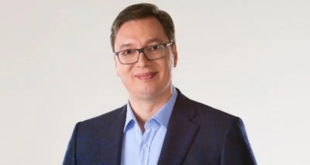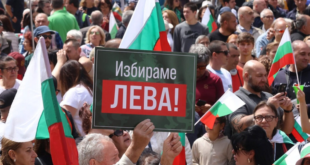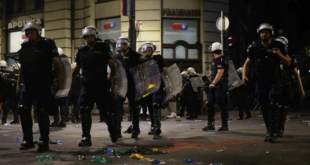 The history of Russian elections since the twilight days of the Soviet Union.
The history of Russian elections since the twilight days of the Soviet Union.
1991
June: Boris Yeltsin becomes the first popularly-elected president of the
Russian Republic, defeating the Communist candidate and former prime minister, Nikolai Ryzhkov. His victory is widely seen as a mandate to counterbalance Mikhail Gorbachev’s power as Soviet leader and to further decentralization, democratization, and economic liberalization.
August: Yeltsin’s iconic stand atop a Soviet tank during the failed Communist Party putsch against Gorbachev turns him into an emblem of progress.
December: Gorbachev [above] steps down as head of the Soviet Union, heralding its demise.
1993Â
September: Yeltsin dissolves the parliament and schedules new elections for December, sparking massive political unrest. After rejecting Yeltsin’s decree, parliament tries unsuccessfully to impeach him and swears in Vice President Aleksandr Rutskoi as acting president.
Â
October: Thousands take to the streets protesting the dissolution of parliament. Yeltsin declares a state of emergency as armed defenders of the parliament barricade themselves inside government buildings. He orders tanks to shell the parliament building, the White House, on 4 October and recaptures the building. In the aftermath of the crisis, Yeltsin bans several political parties that supported the parliament and arrests Rutskoi for organizing mass disorder. On 15 October, he announces that a referendum will be held on a new constitution.
Â
November: Parliamentary election campaign begins on 7 November, the anniversary of the Bolshevik Revolution. Communists are allowed to campaign, but the Russian National Union, a coalition of Yeltsin’s fiercest opponents, is barred from the ballot.
Â
December: Elections produce mixed results for Yeltsin and his reform coalition. While a new constitution is approved, giving the president expansive executive powers, the opposition makes an unexpectedly strong showing. Weary of economic shock therapy and nostalgic for Soviet stability, many voters throw their support behind the Communists and nationalist Liberal Democrats, which win 14 percent and 24 percent of the votes respectively. The pro-Yeltsin Russia’s Choice, led by economic reformer Yegor Gaidar, wins 15 percent.
Â
1994
Â
January: Yeltsin’s cabinet reflects the new distribution of power following the successes of the Communist and nationalist parties in the December elections, whose leaders vow to slow down the turbulent process of economic reform. In response to the changes in economic policy, reformers Gaidar and Finance Minister Boris Fyodorov resign.
Â
1995
Â
June: Lawmakers condemn Yeltsin following a botched attempt to rescue 2,000 hostages taken by Chechen rebels in Budyonovsk, southern Russia. Yeltsin forces the resignations of three ministers held responsible for the failed rescue operation but makes it clear he will not disband his government.
Â
December: Fresh elections give the Communists greater representation in parliament, while support diminishes for the pro-reform parties. Benefiting from growing dismay with economic reforms, the Communists capture 22 percent of the vote, followed by the Liberal Democrats with 11 percent. The two major pro-reform parties, Prime Minister Viktor Chernomyrdin’s Our Home is Russia Party and economist Grigory Yavlinsky’s Yabloko Party, win 10 and 7 percent respectively. The election also sees a notable increase in voter turnout: 69 million Russians (65 percent of the electorate, compared to about 50 percent in 1993) vote.
Â
1996
Â
February: Campaigning begins for the June presidential election – the first since the fall of the Soviet Union. Incumbent Yeltsin is joined in the race by the nationalist Vladimir Zhirinovsky, Communist leader Gennady Zyuganov, and Yeltsin critic Grigory Yavlinsky. Yeltsin promises continued reforms and a bright future for Russian democracy, but his image is marred by the unpopular war in Chechnya and the hardships of economic reform.
Â
May: Yeltsin and Chechen leader Zelimkhan Yandarbiyev sign a ceasefire declaring an end to hostilities by 1 June, bolstering Yeltsin’s image as an effective leader at a critical time in the election campaign. Earlier polls showed that his chance of being re-elected was closely tied his bringing an end to the bloodletting in Chechnya.
Â
June: Yeltsin wins 35 percent of the vote, followed closely by Zyuganov, resulting in a run-off vote scheduled for July. Another candidate, former army general Aleksandr Lebed, finishes third with 15 percent. After the election, Yeltsin names Lebed as his national security advisor.
Â
July: Yeltsin suffers a heart attack just before the second round of voting, prompting speculation that he is unfit for office. However, he goes on to win 54 percent of the vote. The victory is attributed to his appointment of Lebed to his cabinet, but the general is dismissed four months later after being accused of creating a special military unit under his command.
Â
1999
Â
August: An ailing Yeltsin [left] appoints Vladimir Putin, a former KGB officer, as prime minister and touts him as a successor. Yeltsin also announces that elections to the State Duma will take place on 19 December, with the presidential elections to follow in 2000.
Â
December: In Duma elections, the Communists win 24 percent of the vote, barely beating the Unity bloc, which has Putin’s support. A pro-government coalition is rounded out by two reform parties, the Union of Right Forces, led by former Prime Minister Sergei Kiriyenko (8.6 percent), and Yabloko (6 percent). Vladimir Zhirinovsky’s Liberal Democratic party is relegated to the margins, but still manages to win 6 percent, surpassing the minimum 5 percent support required to enter parliament.
Â
2000
Â
January: Yeltsin resigns, leaving power to Putin, who serves as acting president until the elections in March.
Â
March: Putin wins 53 percent of the vote, falling short of expectations but surpassing the 50-percent minimum required to avoid a run-off. Zyuganov finishes a distant second with 29 percent, followed by Yabloko party chief Yavlinsky with 6 percent.
Â
2003
Â
December: United Russia, a party founded in 2001 and endorsed by Putin, captures 38 percent of the vote in the Duma elections. The Communists take a beating, winning 13 percent, and Communist leader Zyuganov denounces the elections as a “shameful farce.” Zhirinovsky’s Liberal Democratic party places third, at 12 percent. Putin defends the results, but international observers criticize the Kremlin’s use of state resources, particularly state-owned media outlets, to promote United Russia.
Â
2004
Â
February: Ivan Rybkin, a challenger of Putin, is reported missing one month before the presidential election. Rybkin headed the Liberal Russia party, funded by exiled entrepreneur Boris Berezovsky. Rybkin resurfaces in London on 10 February, first claiming to have gone to Kyiv in order to relax, though later asserting that he had been drugged and kidnapped. He promises to remain in the presidential race, campaigning from London.
Â
On 19 February, the Duma rejects a proposal to extend the president’s term from four to seven years. Putin himself had opposed to the idea, though some critics question whether the rejection was not a campaign ploy to assure voters of Putin’s good faith.
Â
On 25 February, Putin dismisses Prime Minister Mikhail Kasyanov and much of his cabinet. Viktor Khristenko is installed as acting premier.
Â
March: Putin handily wins the 14 March election with 71 percent of the vote, followed distantly by Communist Nikolai Kharitonov, with 14 percent.
Â
2007
Â
October: Putin agrees to head United Russia’s candidate list in the parliamentary elections, and suggests he is willing to become prime minister when his term ends in March.
Â
2 December: Duma elections.
Â
2008
Â
March: Presidential election.
 Eurasia Press & News
Eurasia Press & News



